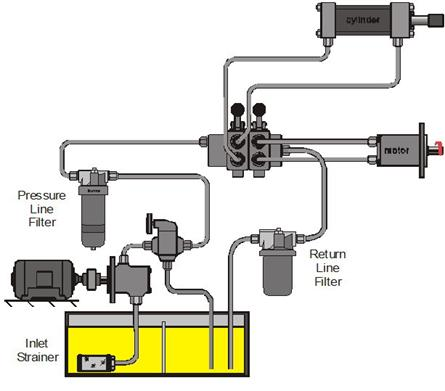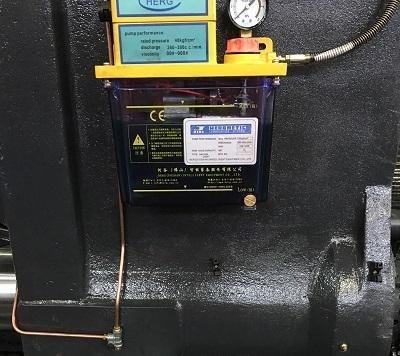Die casting lubrication part maintenance includes choose the right lubricant, frequency and method of using lubricants and so on.
The core of die-casting machine lubrication maintenance is to regularly clean and ensure the lubrication channels are unobstructed + add appropriate lubricants according to the standard cycle + monitor the status of the hydraulic/lubrication system.At the same time, integrate the operation details to ensure that the equipment life is extended and unexpected failures are reduced.
Die casting lubrication part maintenance is an important part to ensure machine the normal operation extend its service life. The following suggestions for the maintenance of the lubrication part of the die-casting machine:

Choose the right lubricant of die casting lubrication part maintenance
In the die casting process, the choice of lubricant is crucial. For example, water-soluble non-graphite die lubricants have good lubricity. It can reduce die wear and prevent die sticking, and will not corrode the die and workpiece. In addition, solid punch lubricants are also widely used in die casting to improve the lubrication of the punch.
The core role of lubricants
Demolding and surface quality: Lubricants prevent castings from sticking to the die, improve the surface finish of castings, and ensure that metal fills the cavity smoothly. Lack of lubrication can make demolding difficult or even damage the mold.
Temperature control: The lubricating film acts as a “barrier to heat flow” to delay mold temperature rise and provide a time window for filling.
Extending mold life: Reducing mold wear, thermal cracking (“heat checking”) and material accumulation (“build up of material”).
Lubricant performance optimization
- Cleanliness: Wax-containing lubricants need to match the phase change temperature to facilitate cleaning, but the demolding effect needs to be weighed.
- Residue control: Lubricant residues are prone to appear near the overflow groove or at the intersection of the melt front, and the concentration, dosage and mold temperature need to be adjusted.
- Process synergy: Combine vacuum system (improve density) and metal flow optimization (“calculated metal flow”) to improve the effect.

Die casting lubrication part maintenance of frequency and method of using lubricants
During the die casting process, the frequency and method of using lubricants need adjust according to the specific situation. For example, in some experiments, using lubricants once after every three die castings is the best effect.
Automatic lubrication system
The lubrication cycle is controlled by a computer program. Automatic lubrication is performed once when the machine is turned on to ensure that all points are fully lubricated.
The central lubrication system is set to add lubricant every 500-700 molds.
Manual lubrication points
- New equipment (first half of the year): add lubricant every half month.
- Subsequent maintenance: add once a month.
- Specific parts (such as mold pins) need to be lubricated and checked for wear every 100,000 cycles.
Mold spray lubrication
Spray once every 2-3 production cycles, and the specific frequency needs to be adjusted according to the specifications of the casting.
Each spray should be small and uniform to form a thin film to avoid excessive spraying that causes the mold to cool too quickly
At the same time, for large aluminum alloy and magnesium alloy castings, high heat-resistant ingredients need to be added to the formula. That to ensure that the lubricant can release gas in a long-lasting and stable manner throughout the die casting process.
Improvement and maintenance of the lubrication system
Traditional dry oil lubrication may cause lubrication defects. So the use of self-lubricating sliding bearings combined with thin oil lubrication can effectively reduce these problems and improve the stability of equipment operation. In addition, the use of oil-gas lubrication technology can further improve the lubrication effect and reduce the failure rate and leakage.
Regular replacement of lubricants
Regular replacement according to the requirements of the equipment manufacturer (such as replacing brake oil every 2 years or 50,000 miles), and completely drain the old oil and clean the bottom of the oil tank
Oil selection
Synthetic lubricants (high boiling point, good low-temperature fluidity, low water absorption) are preferred, and mixing of different types of oils is avoided to prevent chemical reactions.
Additive use
Add anti-wear and antioxidant additives under professional guidance to improve lubricant performance (such as TBN value, viscosity index).

Automation and monitoring of lubrication systems
In order to improve the efficiency and reliability of lubrication systems. It is possible to consider introducing intelligent lubrication automation systems. Such systems can adjust the lubrication cycle and lubricant volume. According to actual conditions, thereby extending the life of the machinery and improving economic benefits.
Automatic control system control level
Basic timer of set lubrication interval cycle, suitable for simple scenarios.
Control logic
Supports time trigger (timer), machine operation cycle trigger or PLC instruction trigger
Regular inspection and cleaning
Regularly check the source of contaminants in the lubrication system and take measures to reduce the impact of contaminants on the grease.
For example, by designing a centralized refueling system and a brand new grease storage tank, the source of contaminants can be effectively controlled and the equipment failure rate can be reduced.
Daily inspection and cleaning
Check the lubrication system before starting the machine
- Check whether the oil level in the lubricating oil tank is sufficient. If it is insufficient, add the same type of lubricating oil.
- Press the lubrication button of the electric box for at least 1 minute to ensure that the automatic lubrication system starts.
- Clean the oil, metal residue and dust on the surface of the machine and the sliding friction surface to prevent impurities from affecting the lubrication effect.
Periodic lubrication inspection
Weekly inspection
- Check whether the automatic lubrication system functions normally, and pay special attention to the lubrication status of the toggle pin sleeve.
- Confirm the amount of grease in the central lubrication pump and replenish it in time if it is insufficient.
Monthly/periodic maintenance
- The manual lubrication points need to be filled with grease every half month (the first six months of a new machine) or every month (after six months of use).
- Check the hydraulic oil status: the oil temperature needs to be maintained at 35°C–55°C (the machine needs to be shut down for inspection if it exceeds 55°C), and the oil should be replaced when the color is abnormal or contaminated.
- Lubricate the die set pins every 100,000 cycles, using high-quality mechanical oil (not spray) to avoid over-saturation.
Half-year/annual maintenance
- Clean the hydraulic oil filter and cooler pipes to prevent scale clogging.
- Lubricate mechanical transmission parts such as screw rods and gears.
Therefore, the maintenance of the lubrication part of the die casting machine needs to comprehensively consider. Such as the selection of lubricants, the frequency of use, the improvement and maintenance of the lubrication system, automatic monitoring, and regular inspection and cleaning. Through scientific and reasonable maintenance measures, the operating efficiency and equipment life of the die casting machine can be significantly improved.



